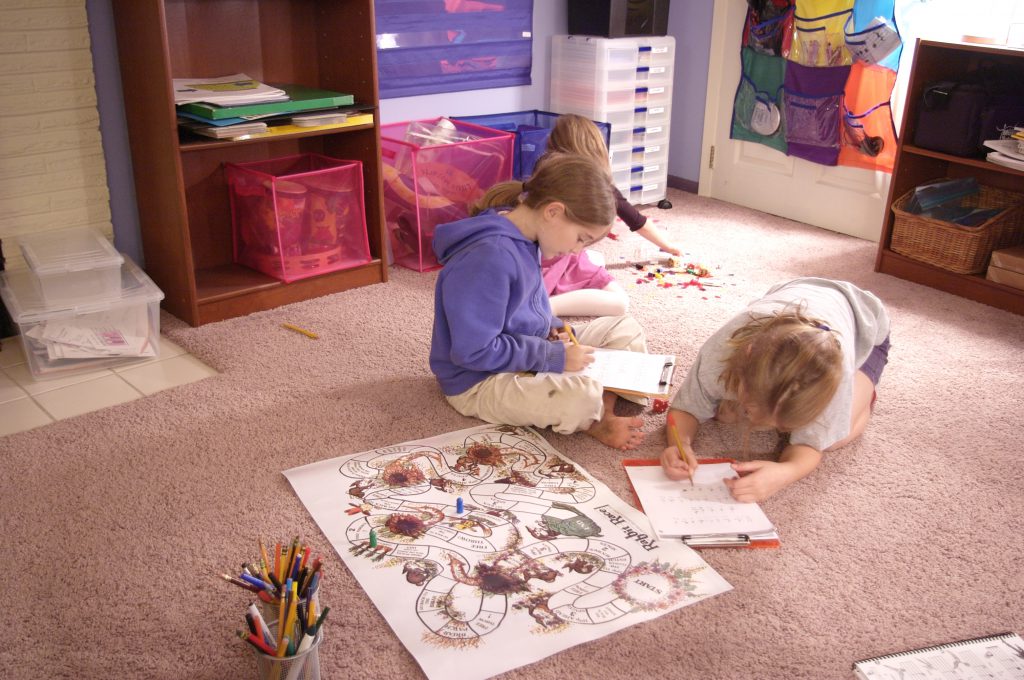Budget cuts to public school music programs have left many children without a knowledge base of songs and singing games that give context and meaning to the symbols of notation.
To learn how I could help out with my private students’ general music education, I took a course for public school music teachers (Kodaly Level 1) at Portland State University. In this course we learned to use folk music in the classroom to teach children how to sing, move to, write, and eventually read music.
Excited to put my new knowledge to work, I taught a folk song to a student – just for a fun – just for that one lesson – just to see what would happen. The student enjoyed this activity so much that she insisted on learning a new folk song at every lesson for the rest of the school year!
So began the integration of folk music into my regular curriculum for beginners!

Jessy and Olivia play Rabbit Race, a game created by Mayron Cole which adds structure and fun to the theory portion of the lesson. Students must answer a question about music or play something on the piano, etc. to be able to roll the dice. In this photo they are writing the stick notation (by ear) for their new folk song in between dice rolls. (a very fun way to learn rhythmic and melodic dictation) In the background, little sister, Katy, quietly plays with some left over game pieces.
Musical concepts that are introduced and/or reinforced in the folk song below:
6/4 time signature, up beat, tie, quarter note, half note, dotted half note, melisma, ritardando, fermata, a tempo, D. C. al Fine, Fine, bar line, double bar, solfege syllables: do re mi fa so la – and when a student is ready to play chords and melody together – adding the tonic, subdominant and dominant chords.
Click image for a closer look.

For He’s a Jolly Good Fellow notated in Kodaly Stick Notation by a 9 year old student . She learned this song so she could play it for her dad’s birthday party.